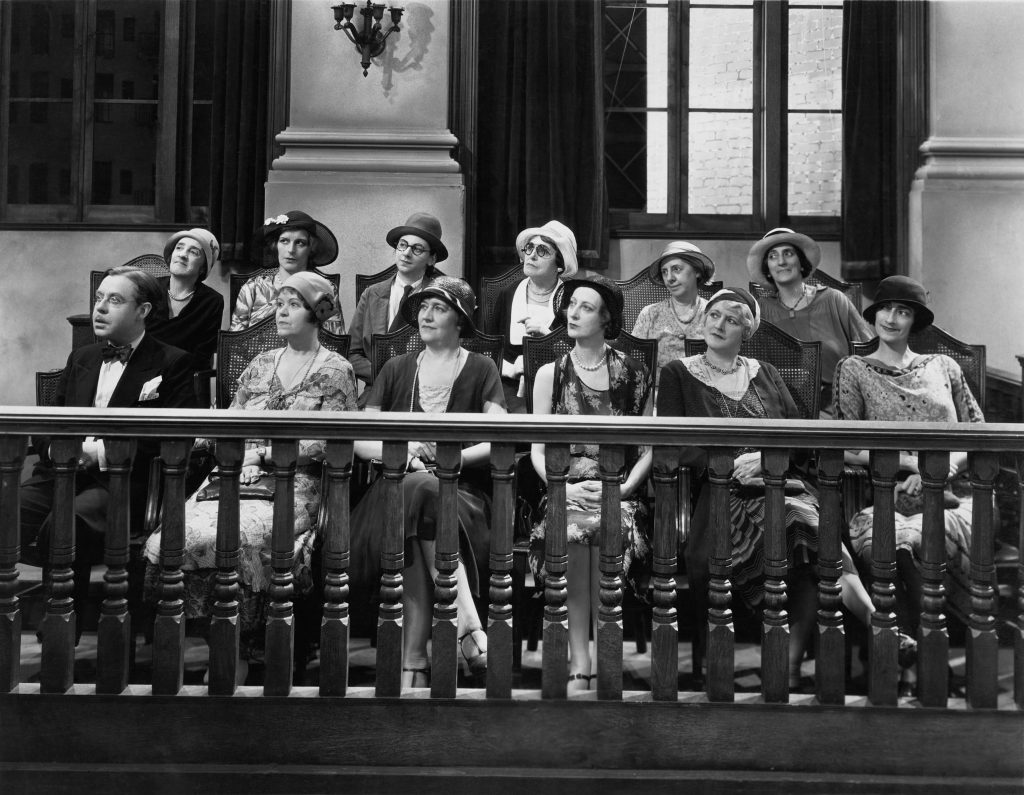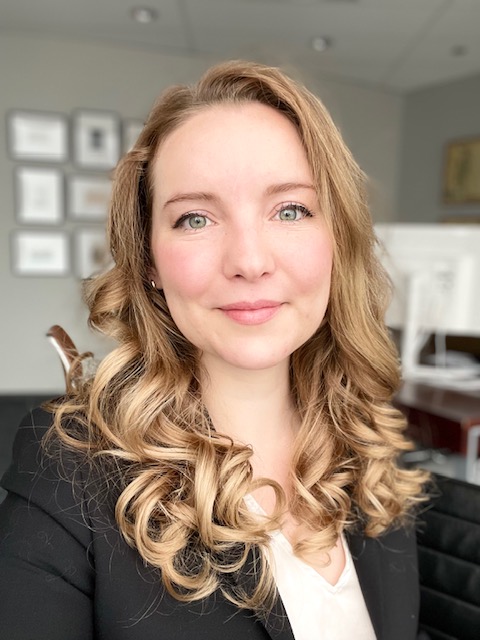“Our review found just four cases where a jury addressed some aspect of Section 101, all from the Eastern District of Texas…. In every one, the jury found the claims routine and conventional. This fact should concern lawyers representing patentees and prompt a rethinking of strategy.”
 Few lawyers have tried patent eligibility, 35 U.S.C. Section 101, to a jury. Our research found just four such cases since the Supreme Court created its muddled two-step test in Alice v. CLS Bank. In every one of those, the jury issued a pro-ineligibility verdict, while none resulted in a final Section 101 determination either way. Understanding how that issue has been handled at and after trial is important for practitioners with cases where Section 101 is at issue, which has become increasingly common.
Few lawyers have tried patent eligibility, 35 U.S.C. Section 101, to a jury. Our research found just four such cases since the Supreme Court created its muddled two-step test in Alice v. CLS Bank. In every one of those, the jury issued a pro-ineligibility verdict, while none resulted in a final Section 101 determination either way. Understanding how that issue has been handled at and after trial is important for practitioners with cases where Section 101 is at issue, which has become increasingly common.
Why Have So Few Juries Considered Section 101 at Trial?
Alice v. CLS Bank issued in June 2014. Prior to that decision, patent-ineligibility was a rarely-asserted defense. And, when defendants asserted it, the judge typically resolved it at the motion-to-dismiss or summary-judgment stages using tests issued by the Federal Circuit, such as the machine-or-transformation test.
The Supreme Court’s two-step Alice test created uncertainty around Section 101 eligibility for many patents and encouraged defendants to assert ineligibility as a defense. The first step, asking whether the claim is directed to a law of nature, a natural phenomenon, or an abstract idea, is amorphous and expansive. Everything ultimately involves laws of nature, and any claim can be considered to involve an abstract idea if one steps back far enough from the specific claim elements, as the Judge Prost’s decision in Yu v. Apple Inc. showed. And the second step, whether any element or combination of elements contains an “inventive concept,” effectively asks whether the court missed something patent eligible in its step-one analysis. That aspect of the inquiry may be why step two analysis so rarely rescues patent claims.
The Alice decision led to an immediate explosion in patent-ineligibility assertions, which the district courts often decided themselves. In the year following Alice, district courts issued over 90 decisions on eligibility. Typically, they did so at the pleadings stage. In the second half of 2014 alone, more Rule 12 pleadings motions were filed and ruled on than during 2008-2012 combined. And whether at the pleading or summary-judgment stages, the district courts held the challenged claims ineligible 69% of the time in the four years after that decision.
The Federal Circuit’s 2018 Berkheimer v. HP decision was the first post-Alice decision from that court suggesting that Section 101 was not solely within the district-court judge’s purview. Berkheimer v. HP Inc., 881 F.3d 1360, 1370 (Fed. Cir. 2018). In Berkheimer, the panel conducted its own step one analysis, finding the claims directed to ineligible subject matter. But at step two, it asked whether “the claim limitations ‘involve[d] more than performance of ‘well-understood, routine, [and] conventional activities previously known to the industry,’” and held that at least this question was a factual one. Berkheimer clarified step two’s factual component, potentially requiring jury involvement unless an absence of factual issues allowed for summary judgment. Berkheimer, however, reaffirmed that Section 101 eligibility ultimately remained a legal determination for the judge without providing guidance on how to integrate a jury’s factual findings.
One might have expected Section 101 to soon appear regularly as an issue in jury trials following the 2018 Berkheimer decision. But COVID slowed many cases’ general progress. And it had an even more significant impact on jury trials, pushing them back because of the health concerns of in-person trials and the uncertainty of adjudicating Zoom trials.
Approaching Trial of Section 101 Eligibility
Our review found just four cases where a jury addressed some aspect of Section 101, all from the Eastern District of Texas, albeit in front of three different judges: Maxell v. ZTE (5:16-cv-179), PPS Data v. Jack Henry (2:18-cv-00007), Infernal Tech., LLC v. Sony Interactive Entm’t LLC (2:19-cv-248), and Innovation Sciences v. Amazon (4:18-cv-474). In Maxell, Section 101 was raised at summary judgment, but Judge Schroeder declined to answer any legal questions, including step one, before the jury resolved questions of fact. At trial, the court asked the jury to answer Berkheimer’s factual question:
You must decide if the elements in each of these claims taken individually or as a combination involve well-understood, routine and conventional activity previously engaged in by researcher in the field, or well-understood, routine, and conventional activities or components previously known to the industry.
After finding claims of seven patents infringed, the jury found that claims in two of the patents were routine and conventional. Both steps one and two were contested in the post-trial briefing, but the parties settled before the judge ruled on whether those patent claims were ineligible under Section 101.
Infernal Technologies is similar. Judge Gilstrap deferred any determination of step one until post-verdict proceedings while allowing the step two question, whether the claims were well-understood/routine/conventional/previously known, to go to the jury. As in Maxell, the jury found that they were. After post-trial briefing, however, the court ruled that the claims were not abstract at Step 1, making the jury’s factual findings related to step two irrelevant.
In approaching the Innovation Sciences v. Amazon trial, Judge Mazzant overruled the plaintiff’s objection that he needed to resolve step one before presenting step two to the jury. Instead, he followed these two prior cases in deferring the step one determination until after trial while still asking the jury whether the claims were routine and conventional. The plaintiff lost every issue before the jury, which found non-infringement, Sections 102, 103, and 112 invalidity, and that the claims were routine and conventional. After the post-trial briefing, the court never returned to the Section 101 issue, relying instead on the various other invalidity findings.
PPS Data is the one case that took a different approach. In it, Judge Gilstrap ruled that the claims were abstract under step one at summary judgment but left the step two factual question for the jury. The jury then found the claims routine and conventional but also invalid for other reasons and not infringed. Despite having determinations at both steps one and two, the court did not to rule on the ultimate issue of Section 101 eligibility, affirming the judgment on the other issues.
Lessons from the Prior Jury Trials
Several things stand out in how these cases addressed Section 101 in the trial context. First is these judges’ willingness to postpone the step-one determination until after trial. The jury may well be asked about step two unnecessarily. That fact may risk juror confusion between the more lenient Section 101 test and the more stringent Section 103 test, resulting in erroneous obviousness verdicts. If courts find it hard to distinguish those standards, juries may as well.
Second, and relatedly, is the courts’ apparent desire to avoid the Section 101 issue altogether. In both Innovation Sciences and PPS Data, the courts had everything needed to issue a Section 101 ruling, including a jury finding on step two. Yet, both courts instead relied on other issues to support the judgments and left eligibility unresolved. Given the legal uncertainty and conflicting jurisprudence around Section 101, and resulting incentive to appeal all Section 101 determinations, this fact may not be surprising.
Third, in every one of the four jury trials, the jury found the claims routine and conventional. This fact should concern lawyers representing patentees and prompt a rethinking of strategy.
A good place to start might be with the jury instruction on Section 101, which in all four cases appear to have made an affirmative step two finding too easy under current law. In Maxell, PPS Data, and Innovation Sciences, the instructions were nearly identical:
- Maxell: whether “the elements in each of these claims when taken individually or as a combination involve well-understood, routine and conventional activity…”
- PPS Data: whether “the elements of the asserted claims, when taken individually or when taken as an ordered combination involve only activities which a person of ordinary skill in the art would have considered to be well-understood, routine, and conventional…”
- Infernal Technologies: whether “the Asserted Claims involve only technologies and activities that were well-understood, routine, and conventional…”
- Innovation Sciences: whether “the elements of the asserted claims, when taken individually or when taken as an ordered combination, involve only technology which a person of ordinary skill in the art would have considered to be well-understood, routine, and conventional…”
One problem for plaintiffs is ambiguity as to whether all claim elements need to be well understood, etc., as the case law requires, or merely some of them. The Maxell instruction provides no guidance whatsoever on this point. The other instructions potentially address it with their use of “only,” but none really emphasizes this legal requirement. An alternative instruction would clearly require that “all elements” be routine and conventional.
The second issue, and one found to varying degrees in all four instructions, is their failure to require clearly that the combination of steps also be well understood, etc. The Federal Circuit has allowed that unconventional ordering of conventional steps can be patent-eligible. See Bascom Global Internet Services, Inc. v. AT&T Mobility LLC, 827 F.3d 1341, 1350 (Fed. Cir. 2016). Yet a literal reading of the Maxell instruction allowed for a pro-ineligibility step two finding even when elements are combined unconventionally; that instruction allows an affirmative response when the elements are individually conventional or when viewed as a combination. The instructions in the other three cases are not as problematic, but they do fail to highlight that point. An alternative instruction would require that “all elements, both individually and the ordered combination of those elements…” be well understood, etc. for an affirmative step two finding. To fully take advantage of such an instruction, the patentee would need to establish the absence of evidence on these points with its own expert and through cross examination.
Finally, all four instructions limit the step two inquiry to the “routine or conventional” test. None asked whether the claims recited improvements to computer technology or solved technological problems. The Berkheimer panel asked that question, and it might prove to be a more pro-patentee test. 881 F.3d at 1370 (“there is at least a genuine issue of material fact . . .regarding whether claims 4–7 archive documents in an inventive manner that improves these aspects of the disclosed archival system.”). At least one court has picked up on that language. See CBA Env’t Servs., Inc. v. Toll Bros. Inc., 403 F. Supp. 3d 403, 416 (D.N.J. 2019) (“the claims of the ‘105 patent at least present a factual issue as to whether the method claims in the ‘105 patent, provide substantial, technological improvement over conventional . . . techniques known to the industry.”)
Admittedly, this collection of cases is both numerically and geographically limited. But the limited universe increases the likelihood that these cases will be used as models for future cases. Practitioners need to understand what happened as they develop their own future trial strategies.
Image Source: Deposit Photos
Author everett225
Image ID: 12286502

![[IPWatchdog Logo]](https://ipwatchdog.com/wp-content/themes/IPWatchdog%20-%202023/assets/images/temp/logo-small@2x.png)


![[Advertisement]](https://ipwatchdog.com/wp-content/uploads/2024/04/Patent-Litigation-Masters-2024-sidebar-early-bird-ends-Apr-21-last-chance-700x500-1.jpg)

![[Advertisement]](https://ipwatchdog.com/wp-content/uploads/2021/12/WEBINAR-336-x-280-px.png)
![[Advertisement]](https://ipwatchdog.com/wp-content/uploads/2021/12/2021-Patent-Practice-on-Demand-recorded-Feb-2021-336-x-280.jpg)
![[Advertisement]](https://ipwatchdog.com/wp-content/uploads/2021/12/Ad-4-The-Invent-Patent-System™.png)







Join the Discussion
4 comments so far.
B
February 2, 2022 05:42 pm” You must decide if the elements in each of these claims taken individually or as a combination involve well-understood, routine and conventional activity previously engaged in by researcher in the field, or well-understood, routine, and conventional activities or components previously known to the industry.”
I can think of a *YUGE* reason why this jury instruction is idiotic
Greg DeLassus
February 1, 2022 10:05 pmOnly four since 2014? Now that does surprise me. Thanks for sharing this.
Pro Say
January 31, 2022 11:22 pmThoughtful analysis with logical recommendations — thanks.
Anon
January 31, 2022 05:48 pmA pseudonymous poster by the handle of Wandering through would offer a valuable perspective on the court’s treatment of 101 under the 12B6 process.